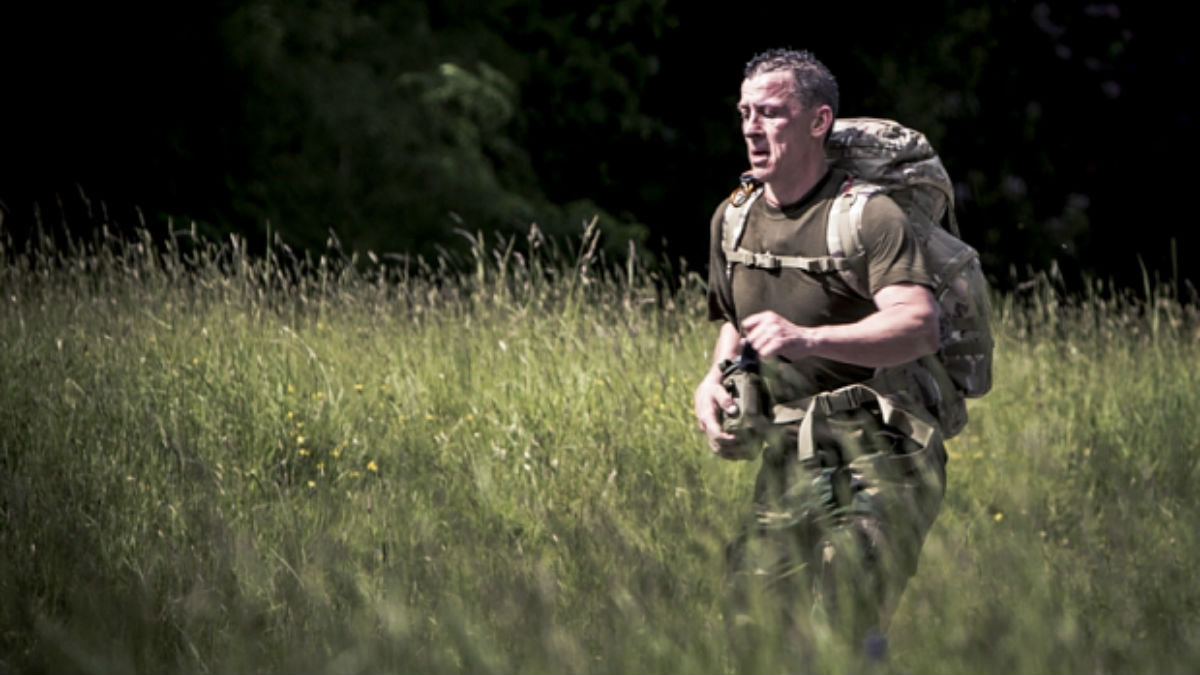SAS: Who Dares Wins proves alpha males don't always come first
SAS selection process is about more than just getting sweaty and being shouted at by burly men

Tonight sees the second episode of Channel 4's reality TV show, SAS: Who Dares Wins. If you missed last week's opener, then you missed a lot of men getting sweaty and getting shouted at by five former members of the SAS & SBS who, as the Daily Telegraph put it, were "big on black sportswear and tidily trimmed facial hair, not so big on smiling".
Selection to join Britain's most elite fighting force involves three phases with the first taking place in the Brecon Beacons. It's designed to test the applicants' endurance, fitness and navigational skills, pushing to the limit the men's physical and mental strength.
The SAS have been coming to the Welsh mountains to weed out potential recruits for 60 years, not long after the regiment was reformed following its disbandment at the end of the Second World War. Formed initially in the summer of 1941, the SAS earned a reputation for daring and courage in a series of raids against German airfields in North Africa. The regiment later served with distinction in Sicily, Italy, France and Germany, but in October 1945 it was disbanded because the government believed there would be no requirement for a special force in the decades of peace they envisaged.
The Week
Escape your echo chamber. Get the facts behind the news, plus analysis from multiple perspectives.

Sign up for The Week's Free Newsletters
From our morning news briefing to a weekly Good News Newsletter, get the best of The Week delivered directly to your inbox.
From our morning news briefing to a weekly Good News Newsletter, get the best of The Week delivered directly to your inbox.
Reformed in the early 1950s to fight against the communist insurgency in Malaya, the SAS turned to its wartime experiences in seeking recruits to its ranks. Major Clarence 'Dare' Newell, an SAS officer during the Malayan Emergency, corresponded with Lt Colonel David Lloyd Owen at the end of 1955, asking his advice on selection criteria.
Lloyd Owen had commanded the Long Range Desert Group [LRDG] during the Second World War, the first British special force of the conflict and a unit that worked closely with the SAS in North Africa. Newell was keen to tap into Lloyd Owen's wartime knowledge and, having done so, he drew up the criteria for SAS selection that he sent to Lloyd Owen for approval on February 3 1956.
He began with the qualities required in recruits to the SAS. They were:
- Initiative
- Self-discipline
- Independence of mind
- Ability to work without supervision
- Stamina
- Patience
- Sense of humour
Next, Newell addressed the method of selection, stating that as "SAS operations demand much of men both mentally and physically" applicants would be assessed in three categories:
A free daily email with the biggest news stories of the day – and the best features from TheWeek.com
a) Reaction to loneliness
b) Reaction to unusual situations when tired
c) Attitude to army life in general
Although the "northernmost parts of Scotland" were considered the best terrain in which to assess applicants, South Wales was chosen for its ease of access to the regiment's administrative base. Here, continued Newell, the recruit would "be divorced from his normal surroundings and placed in an area where he can obtain little or no help from the inhabitants and no encouragement from the normal signs of civilisation".
The nature of the SAS training in the Brecon Beacons has changed little over 60 years. Then, as now, men must carry heavy loads over long distances, navigating their way between checkpoints within a given time. "These exercises," wrote Newell in 1956, "although not long enough to deter a reasonably determined man are sufficient to weed out those whose hearts are not in their task."
Newell's final criterion concerned the volunteer's attitude to army life in general, and here he drew heavily on the experience of the LRDG.
When the LRDG launched a recruitment drive in the summer of 1943 (after the successful conclusion to the North African campaign), their war diary noted: "A man who had the reputation of being 'tough' was by no means a first choice [recruit]. Too often the 'tough' man is the man who lacks intelligence, initiative and discipline."
The tone of the Channel 4 series is 'tough', from the background music to the narrator and contestants, a swaggering bunch of martial arts instructors, stuntmen and triathletes who discover they aren't as tough as they think. As one of the instructors tells the camera, "alpha males are not good team players and they're the ones who tend to fail quite early in selection."
Contestants in SAS: Who Dares Wins have to endure eight days in the mountains compared to the three weeks of real selection. But even that short space of time will be enough to shatter the illusions of most of the hopefuls for, as Major Newell wrote nearly 60 years ago: "The 'professional tough' is seldom at home on his own and without an audience on the exercises soon loses interest. This, combined with the apparently lax discipline, is usually sufficient to uncover his weaknesses."
Gavin Mortimer is the author of The SAS in World War Two (Osprey, 2015)
-
 Why it’s important to shop around for a mortgage and what to look for
Why it’s important to shop around for a mortgage and what to look forThe Explainer You can save big by comparing different mortgage offers
-
 4 ways to save on rising health care costs
4 ways to save on rising health care costsThe Explainer Health care expenses are part of an overall increase in the cost of living for Americans
-
 How to financially prepare for divorce
How to financially prepare for divorceThe Explainer Facing ‘irreconcilable differences’ does not have to be financially devastating